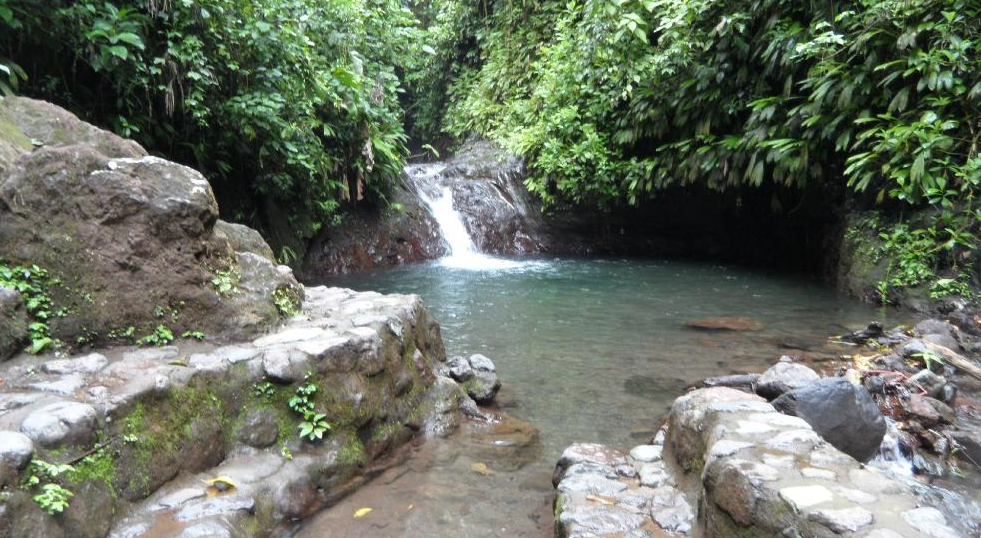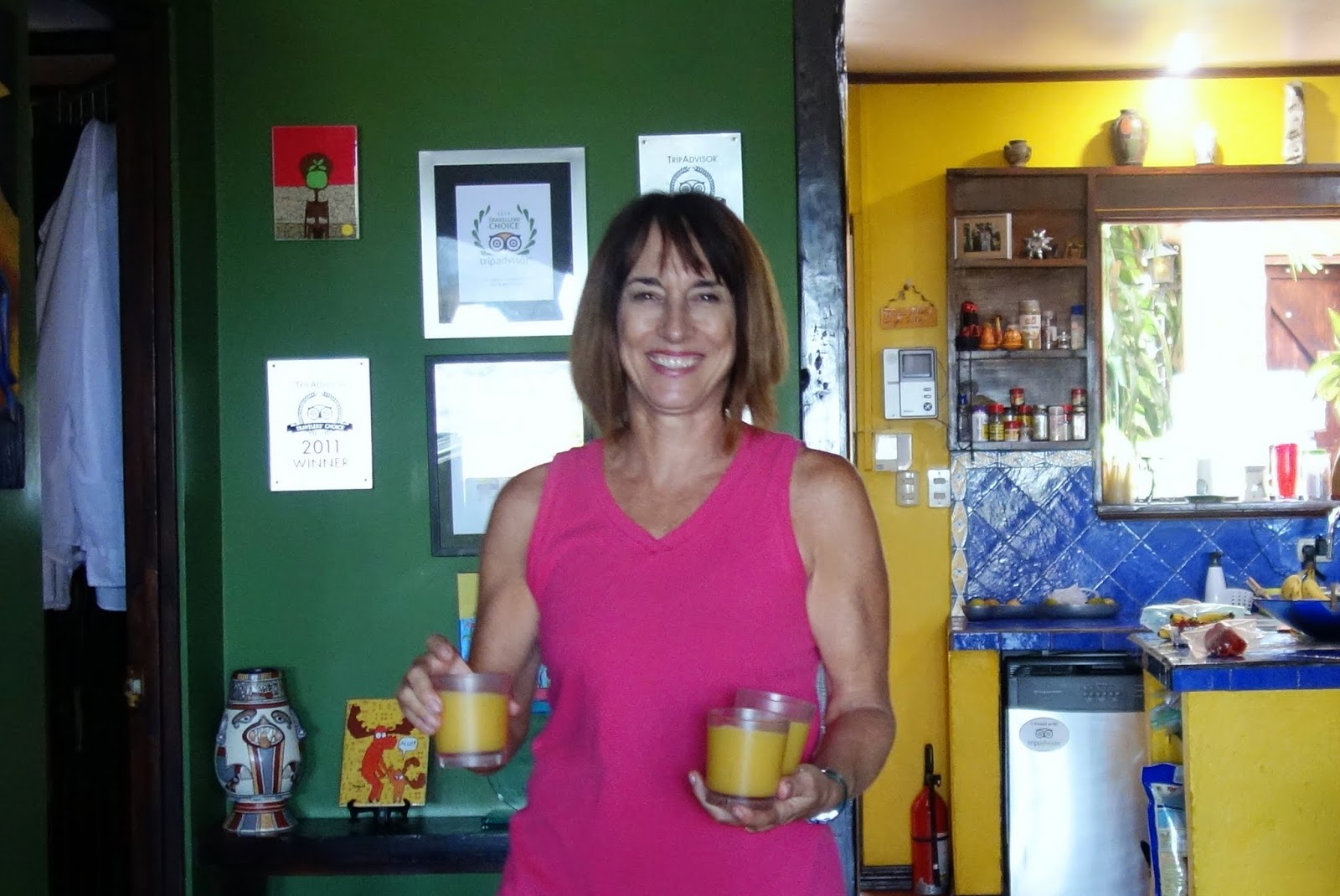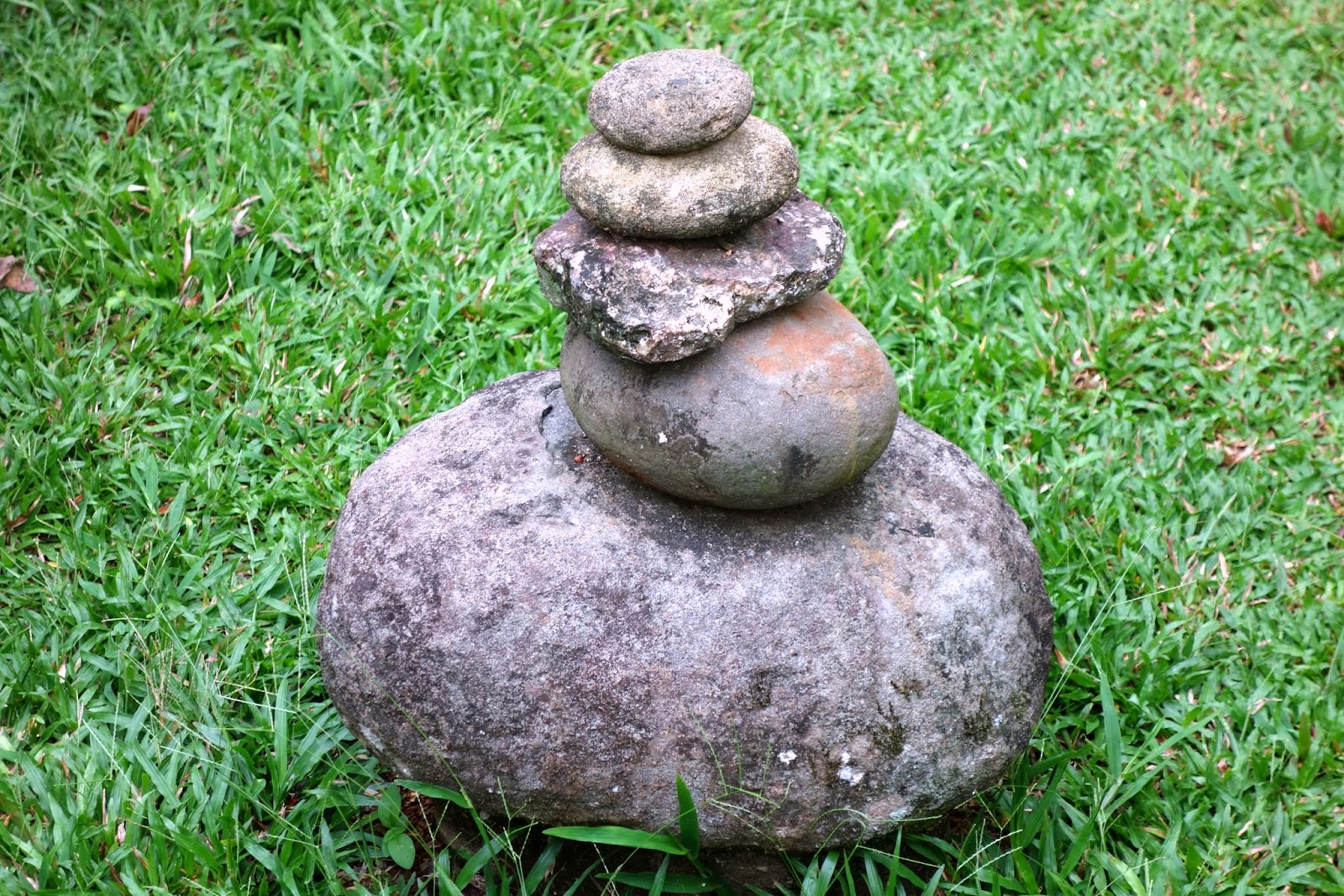We are uncommonly fortunate to have two terrific friends that continue to invite us, every few years, to come and stay with them at their spectacular home in Costa Rica.
 |
| Casa Dos Aquilas (House of Two Eagles ) Given the narrowness of the land the house was broken into two modules; one more public with upstairs living and a downstairs master bedroom and the second module more private with two bedrooms. Could have been named Casa Teca (Teak House) as substantially all of the wood used in construction was teak taken from local forests and milled locally. (Image courtesy of alazancostarica.com) |
Pura Vida, a characteristic Costa Rican phrase, literally means pure life. However, the real meaning is closer to "plenty of life," "full of life," "this is living!" "going great," or "real living." Certainly, Pura Vida applies to what our friends have created in an area called Alazan, Costa Rica.
 |
| Alazan is an eco-friendly community nestled in the rainforest. Overlooking the Central Pacific Coast, it is blessed with ocean, mountain, and river valley views, seasonal streams and waterfalls, and an abundance of tropical flora and fauna. (Image courtsey of alazancostarica.com) |
prepared and served by our exceptional hosts Steve and Bella Rita Devore -
Soon after breakfast a rental car was delivered and signed for, and we were off. We took the "new highway from San Jose to Jaco" then went south along the coast. We arrived at Alazan, after stopping along the way for "making groceries," 2½ hours after leaving our bed & breakfast. After putting things away and opening up the house, we were able to settle in with thoughts of spending the next five days relaxing, exploring, eating, drinking, and most importantly enjoying the company of our good friends.
Top left - corner of north facing deck with a filtered view of the Parrrita
riverbed; top right - interior space looking through the living and dining
areas toward the kitchen; lower - living area with a view of the north facing
deck.
The first night Rob, Callie's brother and general manager of Alazan, arranged for a young couple to come in and prepare dinner.
Silva and her significant other, Ismael, preparing patacones (deep fried plantains) with
Frijoles Molidos (re-fried black beans)
Besides the deliciously addictive patacones, Silva made a muy sabroso dish of beef tenderloin in a cream sauce (similar to Beef Stroganoff) served with white rice and a tomato salad.
"If the gringo myth were true ... that all that there is to eat in Costa Rica is bland and boring ... Lizano Salsa to the rescue. This stuff is on every restaurant table in Costa Rica. It is good on eggs, meat, fish, veggies, table legs, old leather shoes, tofu, sushi, tacos, hamburgers, and of course french fries. In summary, it is good on anything you can shove into your mouth. Buy one bottle for yourself, and another bottle for yourself. And a third bottle just in case the first two go empty."
The following day included an adventurous and educational outing to Villa Vanilla Spice Plantation. A bio-dynamic farm in the middle of a rainforest is located 10 miles east of Quepos. We did not opt for the half day tour but rather completed a self-guided tour. Walking around we experienced the sights, tastes, and aromas of vanilla, cinnamon, pepper , and a wide variety of tropical ornamental plants.
 |
| (Image courtesy of John Nicholson) |
The next afternoon we visited Rainmaker Conservation Project. Rainmaker, a 1,500-acre property, is home to Morpho butterflies, varieties of birds, the colorful poison dart frog, the endemic Harlequin Toad, and thousands of unique plant species. Once again electing to self-guide ourselves, we walked the trails and came upon a canopy suspension bridge system. The bridges, we were told, are built to U.S. engineering standards. The six sections total a bit over 800 feet, spanning from platforms attached to massive hardwood trees to create an impressive canopy walk. The design permits minimal forest impact, which gave us an opportunity to explore the majesty of the forest canopy from a bird's eye view. At the end of the walk a pristine waterfall pool will beckon us to enjoy a refreshing dip.
 |
| Joan is crossing one of six suspension bridges. |
 |
| Pristine waterfall pool |
 |
| Gus and Joan just cool'n off (Image courtesy of John Nicholson) |
Today was to be a day of relaxation. What can be more relaxing than a day at the beach? Before hitting the beach, we first had lunch at the Mosaic Restaurant at the Alma del Pacifico Beach Resort & Spa. This definitely was a "2-for" ... paying for a meal allowed us access to the lawn and lounge chairs adjacent to the beach for the afternoon.
 |
| Playa Esterillos This serene, contiguous stretch of beach is made up of Esterillos Oeste to the west and Esterillos Este to the east. |
 |
| Lawn and lounge chairs of Resort |
 |
| Callie & John boogie boarding |
 |
| Gus reading The Path Between the Seas, The Creation of the Panama Canal 1870-1914 by David McCullough |
The Finca is in its early stage and is evolving; the concept is sound, and the community of Alazan is united in its mission to create a sustainable, organic agro-system. To the Alazanians, the very best of luck in your endeavors.
Arising early, we pack, have a small breakfast and are off to San José International Airport. Tomorrow Panama City and the Canal.
































